‘RESTRICTED’ 1945 - Important Air Bases and Air Distance in the Pacific Area - Bombing Navigational Chart
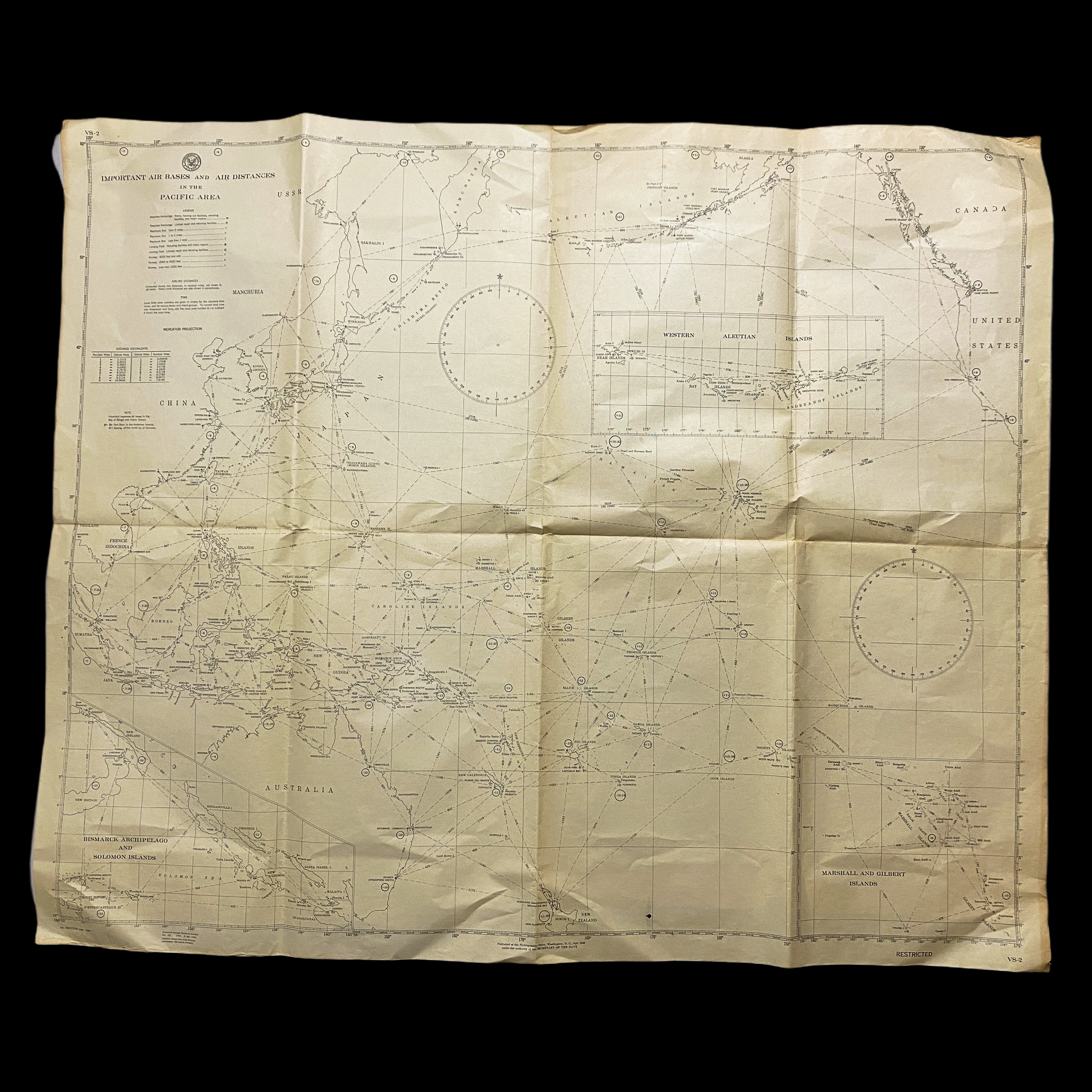


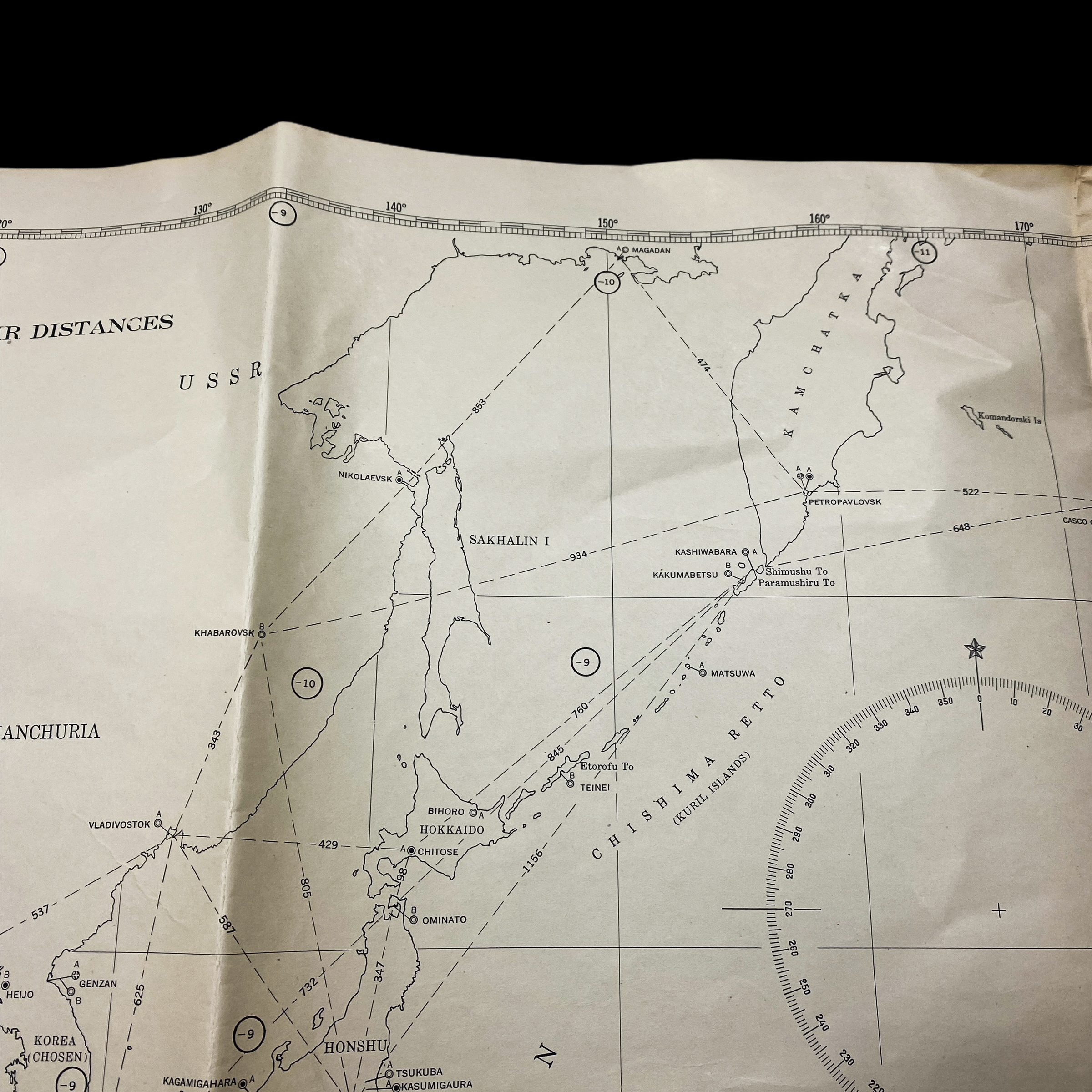

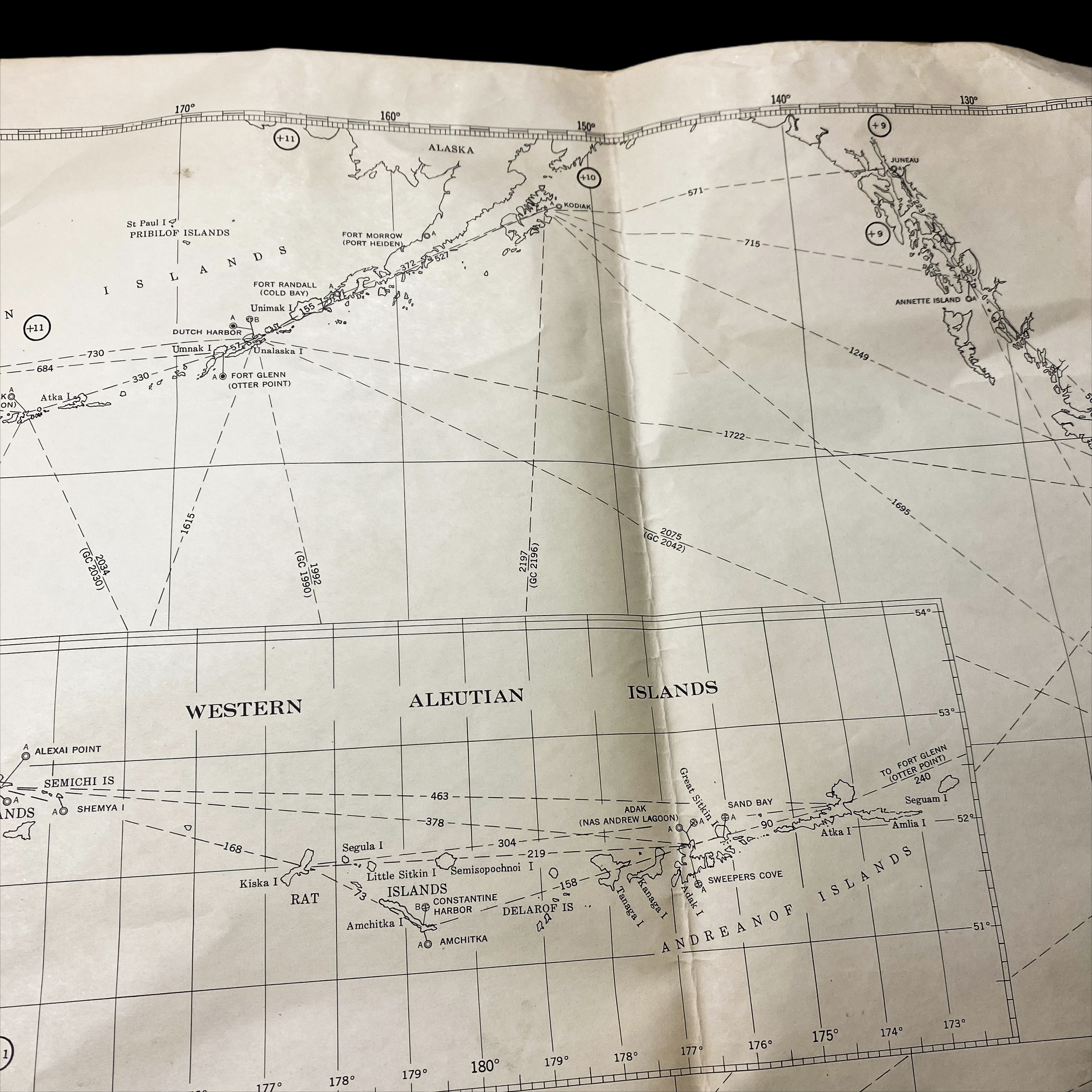



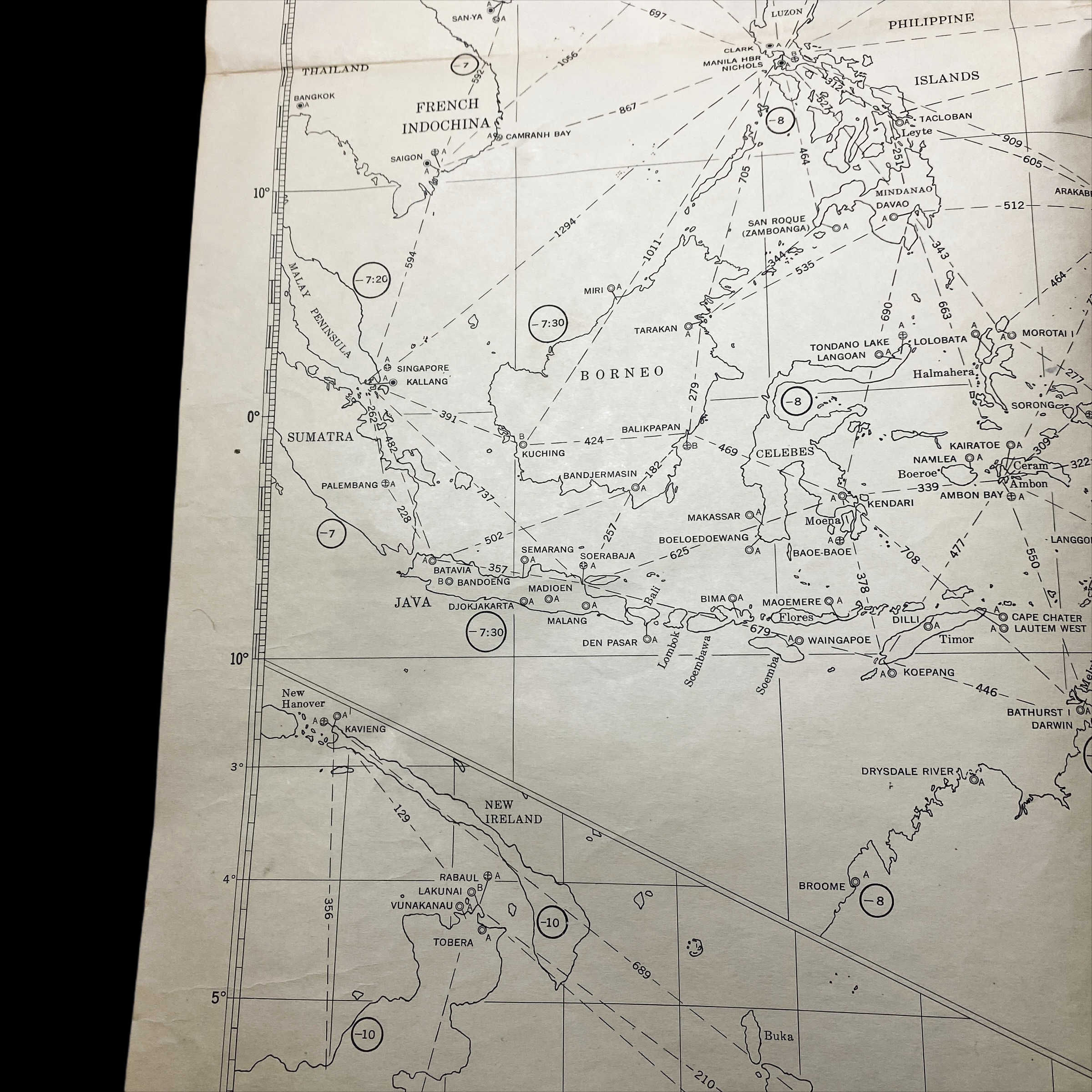



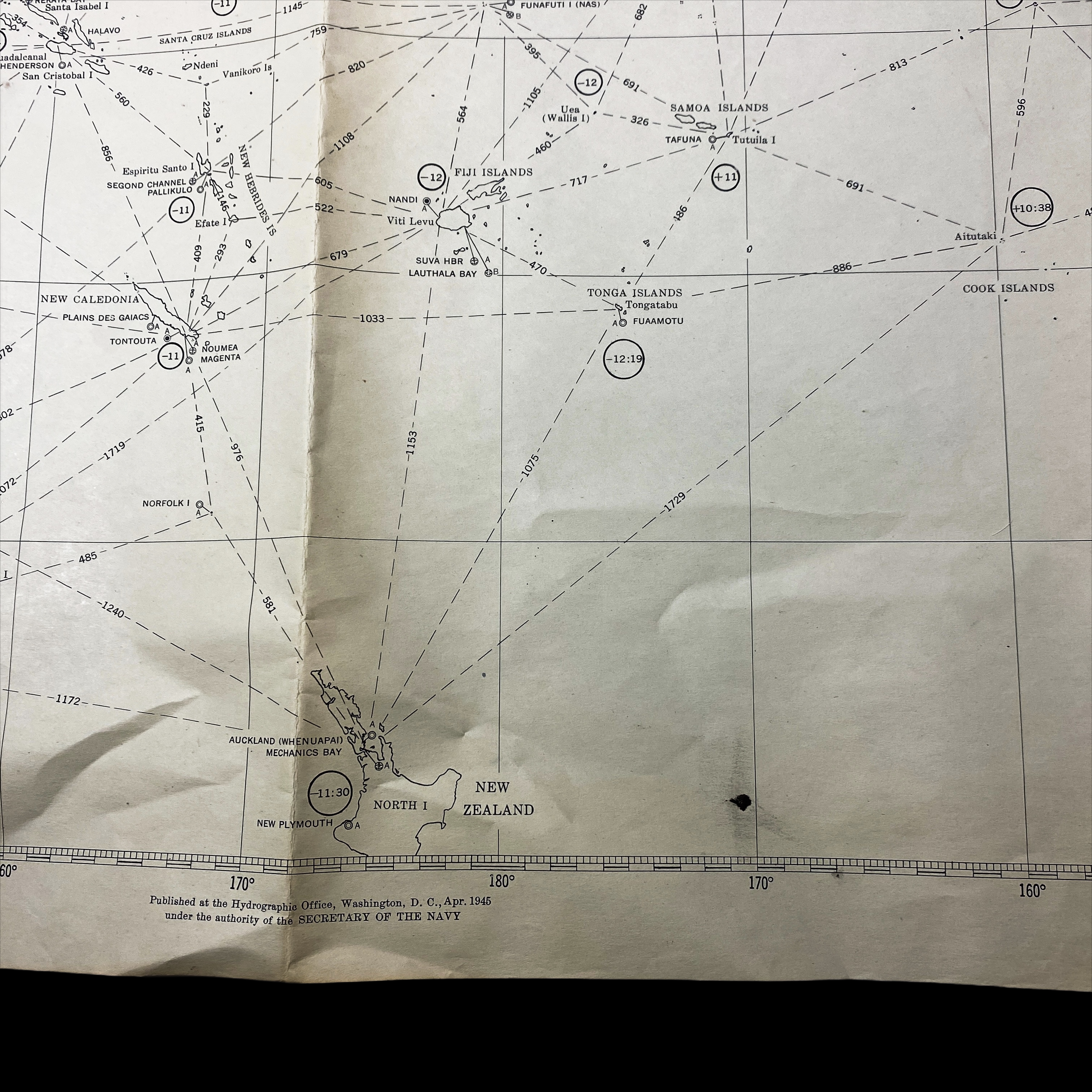
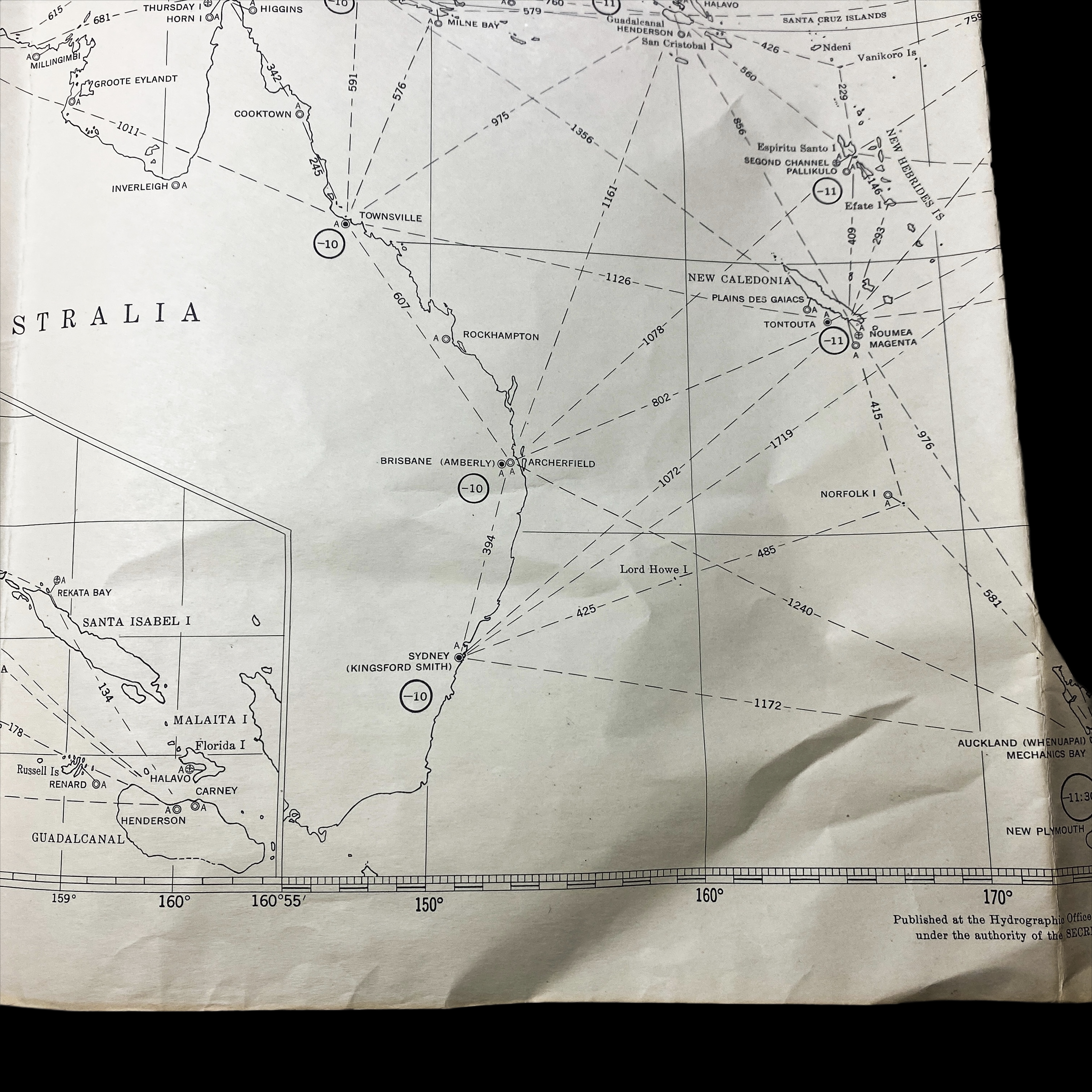


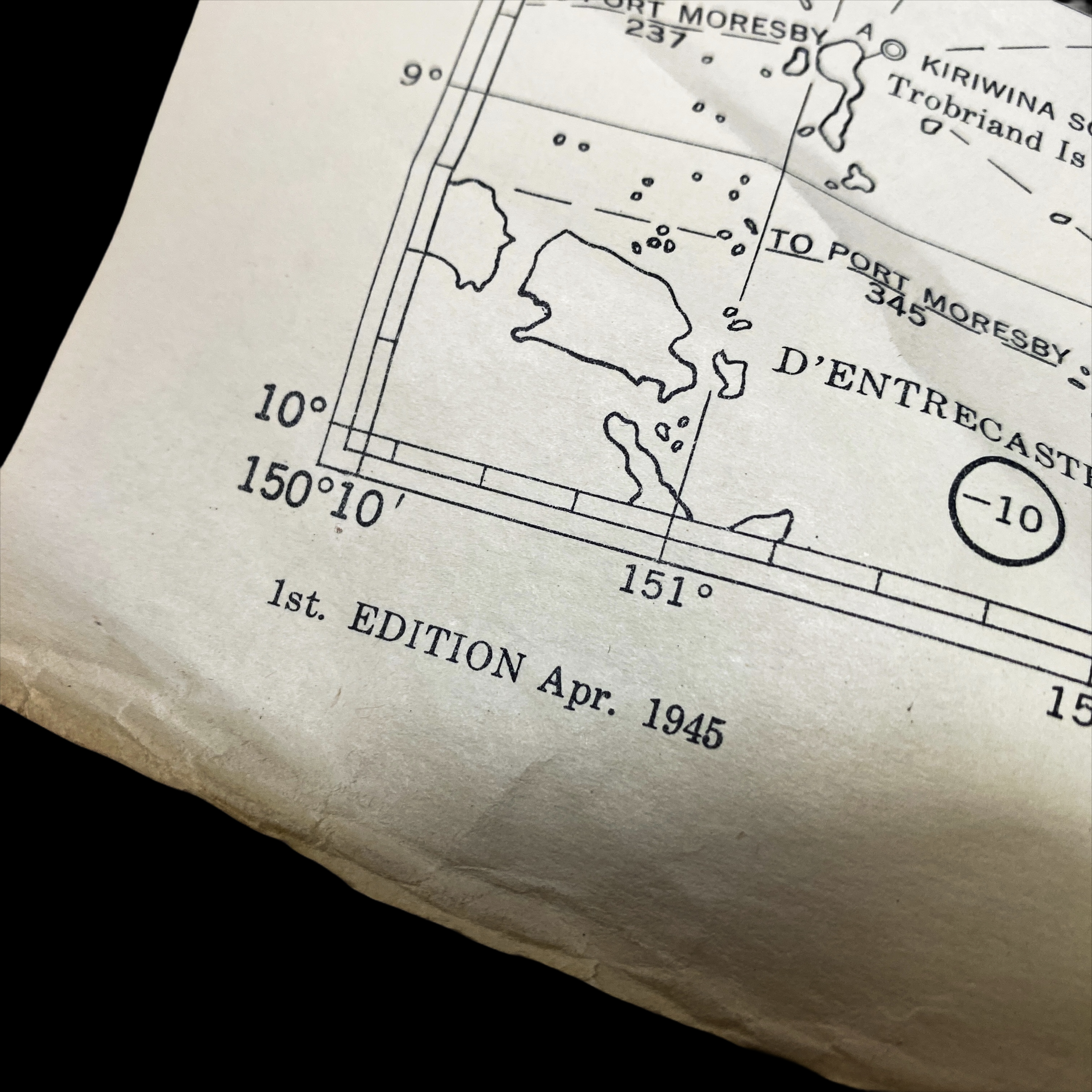





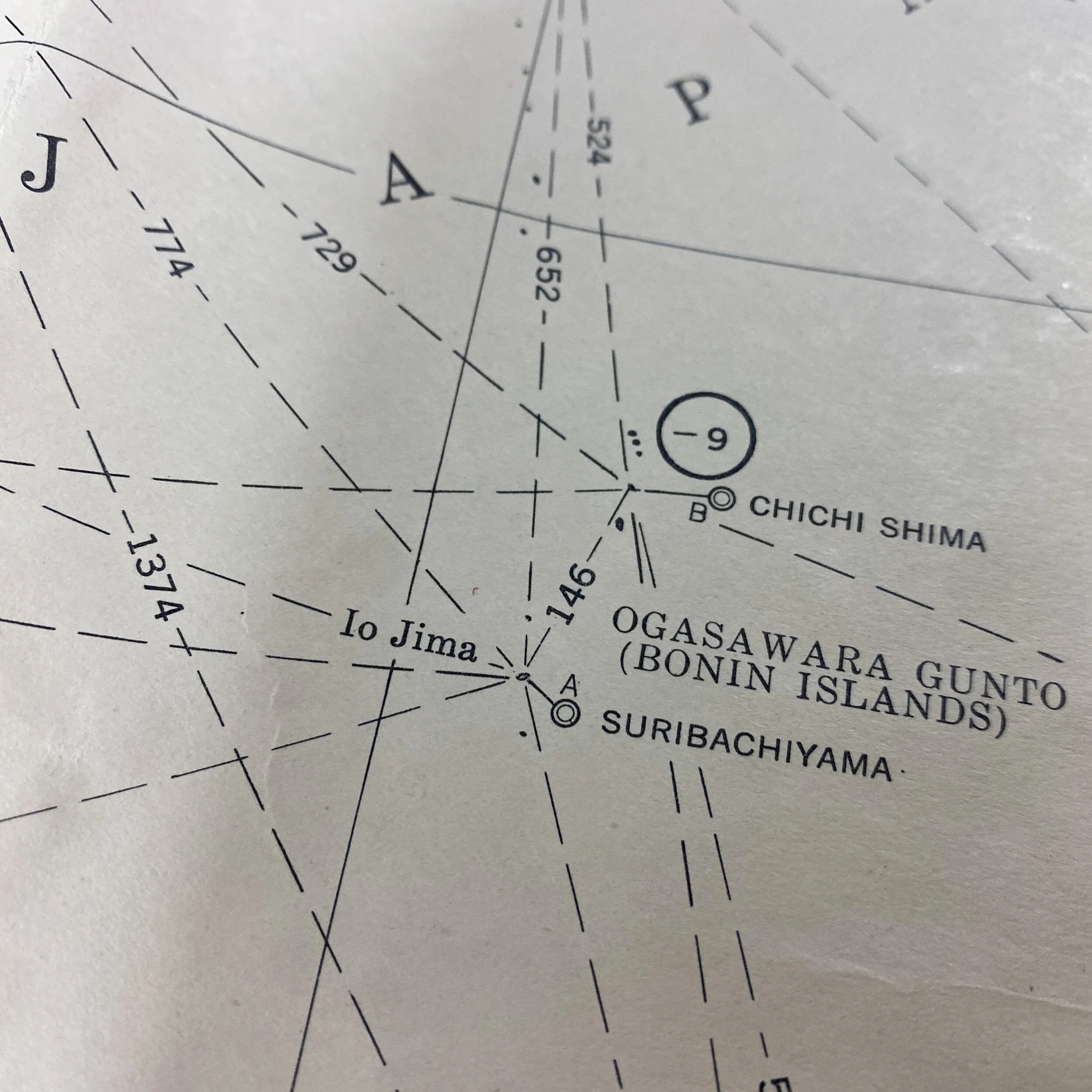



‘RESTRICTED’ 1945 - Important Air Bases and Air Distance in the Pacific Area - Bombing Navigational Chart
Size: 34 x 41 inches
Titled “Important Air Bases and Air Distance in the Pacific Area” this ‘RESTRICTED’ 1st Edition print V2-S series map is dated 1945 and was used exclusively for B-29 Bomber Pacific Theater air navigation. This map is one of a handful of maps from this V2-S series that still exist today. These maps were printed extremely large and were meant to be folded in multiple ways as the bombers moved from island to island with the correctional lines marking miles. With multiple places on the map for the bombing navigator to place the aerial navigational compass, this map was intended for a wide range of use for bombers and U.S. planes across all of the Pacific Islands. This map was corrected through the ‘Notice of Aviators’ and is marked No. C8 with an updated date as of April 1945. 1945 neared the end of the war in the Pacific, 1945 saw a large increase in strategic bombing on islands near and on the Japanese homeland. During the time this map was in use and operational the U.S. Marines we're landing on Iwo Jima, American B-29 bombers increased strategic bombing campaigns against the Japanese, the invasion of Okinawa, followed by extensive and countless bombing raids on Japan, followed by the use of the atomic bomb and the official Japanese surrender. The map itself features an extensive legend detailing seaplane facilities and military bases, as well as beacon locations, military bases for land plane facilities, as well as very rare legend of runway indications and length measurements. A shade of a circle depicted the length of the longest runway in feet on the island, this was extremely crucial for landing large planes like the heavy bombers that would later go on to bomb Japan and other late islands as the Allies pushed up their bombing raid campaigns against the Japanese. The maps main features is the air distance lines and time variations as see hovering over and connecting the islands.
This map played an extremely vital part of the war and was heavily used by a U.S. bomber air navigator fighting in the Pacific Theater. This map shows some of the most infamous islands in the Pacific ranging from as far down as New Guinea, Borneo, Celebes, Philippines, Peleliu, the Marianas Islands, Iwo Jima, Okinawa, and the infamous homeland of Japan.
Air Raids on Japan:
Allied forces conducted many air raids on Japan during World War II, causing extensive destruction to the country's cities and killing between 241,000 and 900,000 people. During the first years of the Pacific War these attacks were limited to the Doolittle Raid in April 1942 and small-scale raids on military positions in the Kuril Islands from mid-1943. Strategic bombing raids began in June 1944 and continued until the end of the war in August 1945. Allied naval and land-based tactical air units also attacked Japan during 1945.The United States military air campaign waged against Japan began in earnest in mid-1944 and intensified during the war's last months. While plans for attacks on Japan had been prepared prior to the Pacific War, these could not begin until the long-range B-29 Superfortress bomber was ready for combat. From June 1944 until January 1945, B-29s stationed in India staged through bases in China to make a series of nine raids on targets in western Japan, but this effort proved ineffective. The strategic bombing campaign was greatly expanded from November 1944 when bases in the Mariana Islands became available as a result of the Mariana Islands Campaign. These attacks initially attempted to target industrial facilities using high-altitude daylight "precision" bombing, which was also largely ineffective. From February 1945, the bombers switched to low-altitude night firebombing against urban areas as much of the manufacturing process was carried out in small workshops and private homes: this approach resulted in large-scale urban damage. Aircraft flying from Allied aircraft carriers and the Ryukyu Islands also frequently struck targets in Japan during 1945 in preparation for the planned invasion of Japan scheduled for October 1945. During early August 1945, the cities of Hiroshima and Nagasaki were struck and mostly destroyed by atomic bombs.Japan's military and civil defenses were unable to stop the Allied attacks. The number of fighter aircraft and anti-aircraft guns assigned to defensive duties in the home islands was inadequate, and most of these aircraft and guns had difficulty reaching the high altitudes at which B-29s often operated. Fuel shortages, inadequate pilot training, and a lack of coordination between units also constrained the effectiveness of the fighter force. Despite the vulnerability of Japanese cities to firebombing attacks, the firefighting services lacked training and equipment, and few air raid shelters were constructed for civilians. As a result, the B-29s were able to inflict severe damage on urban areas while suffering few losses.The Allied bombing campaign was one of the main factors which influenced the Japanese government's decision to surrender in mid-August 1945. However, there has been a long-running debate over the morality of the attacks on Japanese cities, and the use of atomic weapons is particularly controversial. The most commonly cited estimate of Japanese casualties from the raids is 333,000 killed and 473,000 wounded. There are a number of other estimates of total fatalities, however, which range from 241,000 to 900,000. In addition to the loss of mostly civilian life, the raids contributed to a large decline in industrial production.